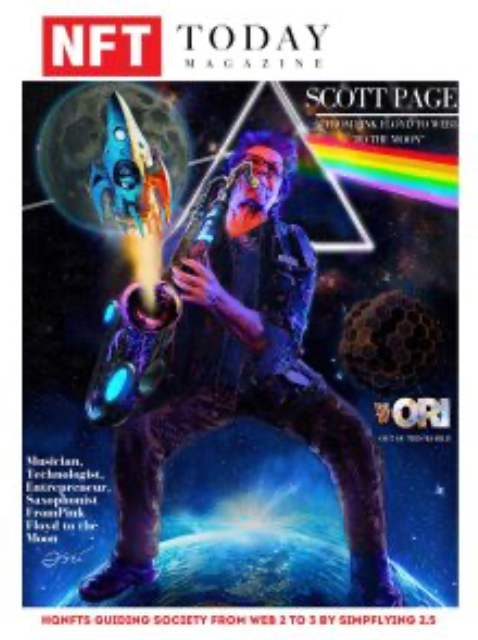The Ex-Tennis Pro Disrupting Web Design: How Lucas Poelman’s PeachWeb Is Making 3D Sites as Easy as Drag-and-Drop
Staff Writer • 2025-06-20
From the Tennis Court to the Digital Frontier Lucas Poelman didn’t take the typical route into tech. Before co-founding PeachWeb, he was globetrotting as a Great Britain junior tennis player, competing in over 30 tournaments a year. The discipline, travel, and constant competition trained him to think differently and bounce back fast. These skills are proving invaluable in the startup world. But after hanging up his racket, Poelman didn’t stay idle. A chance meeting with his future co-founder in Brazil led to an early venture in mobile apps, eventually evolving into a much bigger idea: making the internet itself more immersive. Websites Are Boring, and That’s a Problem Scroll through the internet today and you’ll find much of it looks the same. That’s not just an aesthetic issue. It’s a brand problem. Most websites feel lifeless: static blocks of text, repetitive templates, and visuals that do little to communicate emotion or story. PeachWeb changes that. Built on WebGL, it is the world’s first no-code 3D website builder. The platform lets anyone from solo designers to major brands build fully animated, interactive web experiences without touching a line of code. “It’s like Unreal Engine meets Wix,” says Poelman. Why WebGL Changed the Game For years, 3D web design was mostly a pipe dream, limited by slow browsers and expensive development cycles. That changed in 2021 when all major browsers began supporting WebGL, unlocking real-time 3D graphics that load smoothly, even on mobile. But building with WebGL still required elite development talent and deep pockets. A typical 3D site could take six months and cost over $100,000. “Only the biggest brands could afford to play,” says Poelman. PeachWeb flipped that model entirely. Drag, Drop, Done: How PeachWeb Works At its core, PeachWeb makes the complex feel simple. Users choose from a growing library of 3D elements such as floating orbs, particle effects, or a now-famous digital fish and drag them into customizable layouts. Animations, camera motion, and content blocks can all be adjusted in a visual interface. There’s no need to understand shaders or geometry. In fact, no coding skills are required at all. Designers can go from idea to live 3D site in a matter of hours or days, not months. Why Brands Are Lining Up Startups, e-commerce sites, and creative agencies are among the early adopters. The appeal is obvious. 3D websites don’t just look better. They perform better. Users stay longer, click more, and remember the experience. “In a world where attention is currency, this is how you stand out,” says Poelman. PeachWeb also launched Peach Sites, a white-glove offering where users can transform an existing 2D site into an interactive 3D experience in under a week, starting at $5,000. “It’s plug-and-play for immersive branding,” he explains. The AI-Powered Future of Website Design Poelman isn’t stopping at drag-and-drop. The team is now integrating generative AI into the builder, enabling users to prompt everything from layout suggestions to color palettes to animated effects. Eventually, PeachWeb aims to let users design full 3D sites by describing them in natural language. “This is where it’s all headed,” Poelman says. “Soon, brands will be able to spin up completely custom 3D experiences in minutes with just a few words.” Designing for Joy in a Flat World Behind the tech is a more emotional mission. Poelman and his team talk a lot about creative joy. That’s the feeling of seeing your imagination come to life on the screen. “Designers have been stuck in a box for years,” he says. “PeachWeb gives them room to breathe.” That joy is already spreading. Over 8,000 designers and agencies have joined PeachWeb’s Discord, sharing ideas, templates, and encouragement as they push the limits of what the web can be. The Internet, Reimagined It’s not every day a former athlete takes on the future of the internet. But Lucas Poelman isn’t chasing trends. He’s building the infrastructure for the next era of digital expression. One where the web isn’t just seen. It’s felt. Whether it’s a particle effect, a floating cube, or a fish that swims down your screen, PeachWeb is turning touchpoints into memory and making websites fun again.
See More Posts
A look at how NFTS, Web 3, Gaming, Cryptocurrencies and Blockchain are reshaping businesses across the globe.
@NFT Today Magazine


